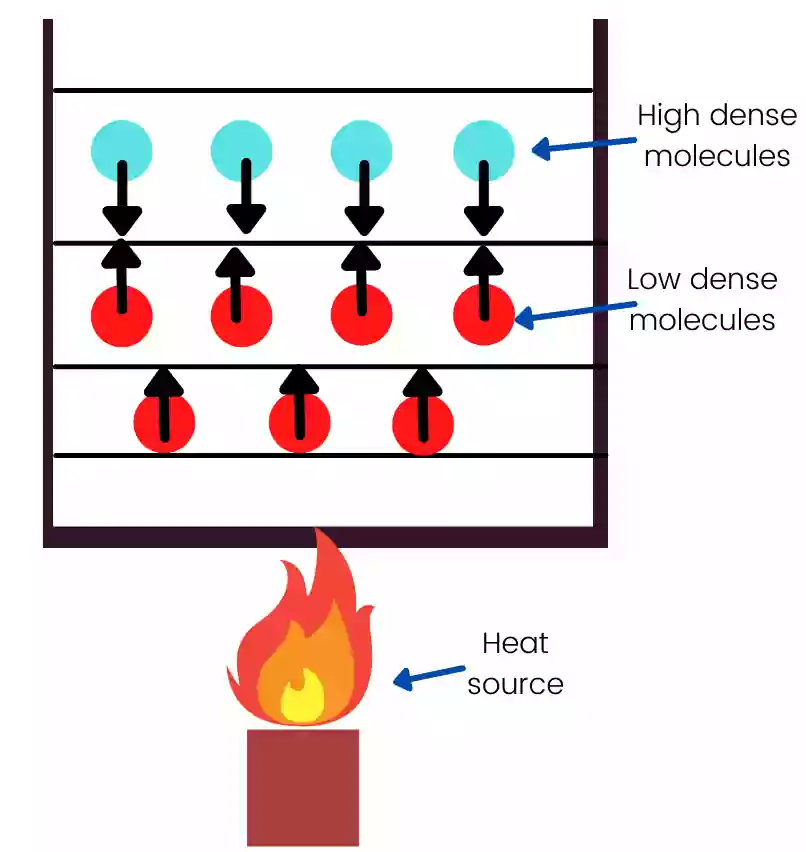In free or natural convection, the fluid molecules move due to the density variation caused by a temperature gradient. Thus hot and low-dense molecules move slowly above cold and high-dense molecules. While in forced convection, an external source like a fan or blower generates the fast movement of molecules.
Contents:
What is Free Convection?
Free convection, also known as Natural convection, is a type of convection heat transfer in which the fluid molecules move due to the density and temperature gradient to transfer the heat.
Eg: During the boiling of water, the molecules in the bottom layer gain heat from the heat source. Therefore, the water molecules in this layer become less dense in comparison with the upper layer.

Therefore, a buoyant force is created on the molecules in the lower layer and these molecules move in the upper direction. While the less dense upper molecules move in a downward direction due to the higher density.
For natural convection, no external equipment is used to generate motion into the molecule.
What is Forced Convection?
Forced convection is the type of convective heat transfer in which the motion in molecules is generated by the use of an external source for the transfer of heat. E.g. Exhaust fan or a ceiling fan.
The exhaust fan helps to eject the heat inside of the room by generating motion into the air molecules.
The rate of heat transfer in forced convection is higher which can be controlled by external equipment. Therefore, the system with forced convection has a higher overall heat transfer coefficient than free convection.
Free convection vs forced convection:
| Sr. No. | Free convection | Forced convection |
|---|---|---|
| 1 | In free convection, the molecules move due to density and temperature variation. | In forced convection, the fluid molecules are forced to move by an external source. |
| 2 | The rate of heat transfer is lower. | The rate of heat transfer is higher. |
| 3 | No external equipment is required. | External equipment is necessary for convective heat transfer eg. Pump, Blower, fan, etc. |
| 4 | The motion of molecules is comparatively slower. | Molecules of fluid are forced to move faster. |
| 5 | Equipment based on natural convection is larger in size. | The equipment based on forced convection is compact in size. |
| 6 | The flow of molecules cannot be controlled. | The flow of molecules can be controlled by controlling the fan, pump, or blower. |
| 7 | It has less overall heat transfer coefficient. | The overall heat transfer coefficient is higher. |
| 8 | E.g. movement of water molecules while boiling. | E.g. Movement of molecules due to the fan or blower. |
Read also:
So informative and helpful to understand the free and force convection easily.